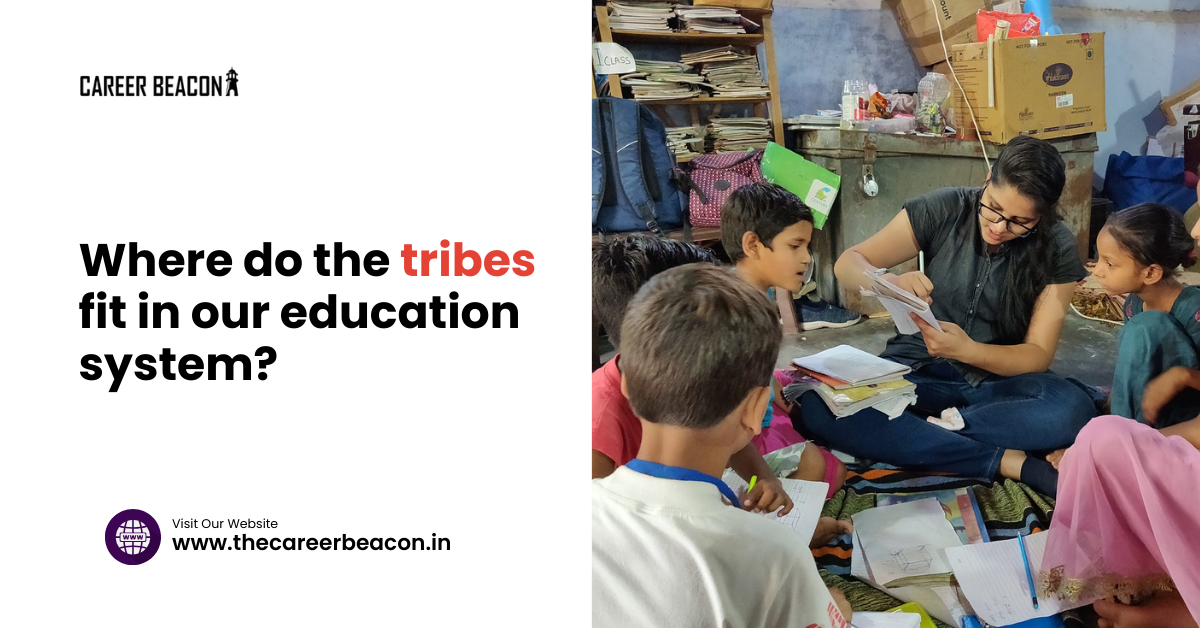
Where do the tribes fit in our education system?
Since the tribal people of India have a very colourful cultural background, they are very constrained when it comes to education. Owing to different endeavours made by the government, the gap between the conventional education system and the tribal people is still quite large. This blog looks at the place of tribals in the education system, their difficulties, and measures to be taken to address the issue.
Understanding the Tribal Education Landscape:
Tribal students are located in rather inaccessible geographical parts of a country, so they face a major barrier to accessing educational institutions. It shows that inadequate infrastructure, particularly schools, remains a rare commodity in the region. Besides that, the curriculum does not seem to fit the cultural context of the country, and the formal education system does not support the students’ understanding of the national culture.
Challenges Faced by Tribal Students:
Language Barriers
It is common to find most of the tribes’ children speaking their languages or dialects, while the medium of instruction in schools and colleges is a regional or national language. It keeps them from grasping and succeeding in academics fully because of their limited language ability.
Socio-Economic Factors
This is a big problem in the more tribal areas of India, as a significant number of families lack the basic resources to buy education equipment. This, together with the calls for children to start contributing to the incomes of their families through earnings, makes school dropout rates high.
Cultural Disconnect
There is a very sharp city bias, with very little consideration for the tribal value system of schooling. This lack of connection with tribal cultures may eventually make tribal students lose interest and feel a sense of isolation and exclusion.
Gender Disparity
Tribal girls have to cope with other problems, such as early marriage and domestication, which contribute to such failures among them.
Government Initiatives for Tribal Education
The government has launched several schemes aimed at improving tribal education, such as:
- Eklavya Model Residential Schools (EMRS): These schools are set up in tribal regions for the education of tribal students in grades 6 to 12.
- Ashram Schools: These are the type of schools that are intended to address the needs of education of the tribal students, where they can get a proper education that would facilitate their learning.
- Scholarships and Incentives: In motivating the tribal students to further their education, there are numerous scholarships and financial rewards to be had.
The Role of NGOs and Civil Society:
Particularly impressive is the participation of non-governmental organisations (NGOs) and civil society organisations in supplementing the country’s efforts. They begin on the ground and offer teaching materials, trainers, and consciousness regarding education to the tribes.
Recommendations for Improving Tribal Education
Culturally Inclusive Curriculum
The implementation of such a curriculum with a focus on tribal culture, tradition, and languages could go a long way in recruiting and retaining the tribes’ students in schools.
Teacher Training and Sensitisation
These teachers should adopt culturally sensitive teaching methods, and since they work in tribal regions, this becomes more essential. They should be conversant with the cultural practices of the learners to enable them to close the gap between cultural practices and the formal system of education.
Community Involvement
Community participation in the planning and delivery of educational interventions can help improve such interventions for the needs of the concerned tribes.
Improving Infrastructure
The provision of quality infrastructure facilities such as schools, roads, and information and technology connectivity holds the key to providing education to tribal children.
Promoting gender equality
Extra provisions should be made for educating the tribal girls to enable them to enjoy their educational rights.
Conclusion
Although there has been a lot of progress towards the enhancement of the tribal educational system, much remains to be done for the assimilation of tribal peoples into the general system of education. When we attend to the needs of Native American children and then facilitate a culturally responsive and appropriate environment for their learning, then children in these tribes will rise to the nation’s vision.


